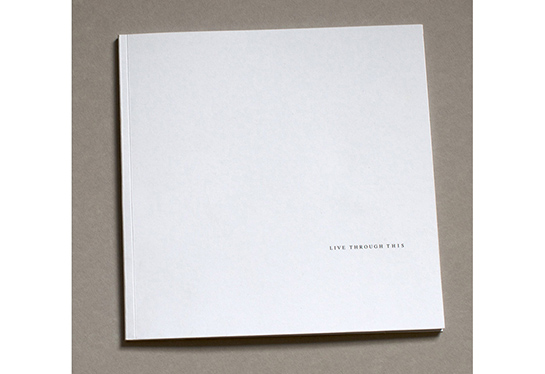Review: Live Through This by Tony Fouhse and Stephanie MacDonald

When I first heard of Tony Fouhse photographing drug addicts in the street, I thought of all the other photographers who had done that before. I’ve always had an uneasy relationship with that kind of work. It’s an old discussion, which I’m very unlikely to resolve in any which way, but I’ll have a go at it anyway.
Taking photographs is easy, too easy. All you need to do is to take your camera and press the shutter button. You can convince yourself that by doing that you have engaged with the world, and that is true, albeit only to a fairly minimal degree. This engagement - or lack of deeper engagement - is particularly relevant for me when I’m looking at photographs of drug addicts (there are other subject matters, but let’s just stay with this one).
You might ask for permission to take a picture (or do it, street-photography/macho style, without asking), but all you’ve really done is just that. You have not engaged with that other human being in front of your camera in any more meaningful way. And if you think you have then I’ll tell you you’re kidding yourself. As yourself: What was as stake for you? Not for the other person who might possibly look emaciated, tired, worn out, very sick. For you. What’s really at stake there for you, taking a photograph of another human being who very obviously is suffering so much?
There is a truly terrible asymmetry of what is at stake for the two parties here.
Now, you can claim that you intend to use your photographs to showcase the problem of drugs or to raise awareness or whatever other altruistic goal you have come up with. But that doesn’t answer the question what was at stake. As I’ve argued elsewhere, if there is nothing at stake at the time a photograph is taken, that tends to translate into the work, and it then is mirrored in how people react to the photographs.
These kinds of thoughts were in my mind when I first saw Fouhse’s photographs of all those different drug addicts. But then the photographer started to focus on a single person, a young woman named Stephanie MacDonald. And somehow something seemed to changed in the Fouhse, because MacDonald became the center of the photographs. But not only that, the photographer started to become involved as if realizing, somehow, that the fact that there was so much at stake for this young woman and so little for him was unbearable.
The project literally became a collaboration, both photographically and in terms of helping MacDonald through some very tough times. There were trips to hospitals, incl. a serious surgery, with Fouhse photographing and helping. If you followed the project on the photographer’s blog you could see there suddenly was a lot at stake. It wasn’t just about the photographs any longer, it was about this young woman’s life, quite literally so. And she got better - as did the photographs. The images transformed along with MacDonald, to acquire depth, to become more personal, to become a true collaboration.
Live Through This, the book that has resulted from this project lists two authors, Tony Fouhse as the photographer, and Stephanie MacDonald as the writer. This violates a lot of rules of what might be considered professional journalism, and the book shows what can be gained from doing that. The photographs give a visual record, and the writing - MacDonald’s, not Fouhse’s - directly speaks of trying to cope with drug addiction. As a result, the viewer will find it hard not to be moved.
I think one can only hope that at the end of a project one has become a better photographer than when one started out. But if there was something at stake, then one can also become not only a different, but a better person. And if that includes having truly helped a single person… I don’t know what else one could wish for.
Highly recommended.
Live Through This; photographs by Tony Fouhse; writing by Stephanie MacDonald; 72 pages plus 12 page booklet; Straylight Press; 2012